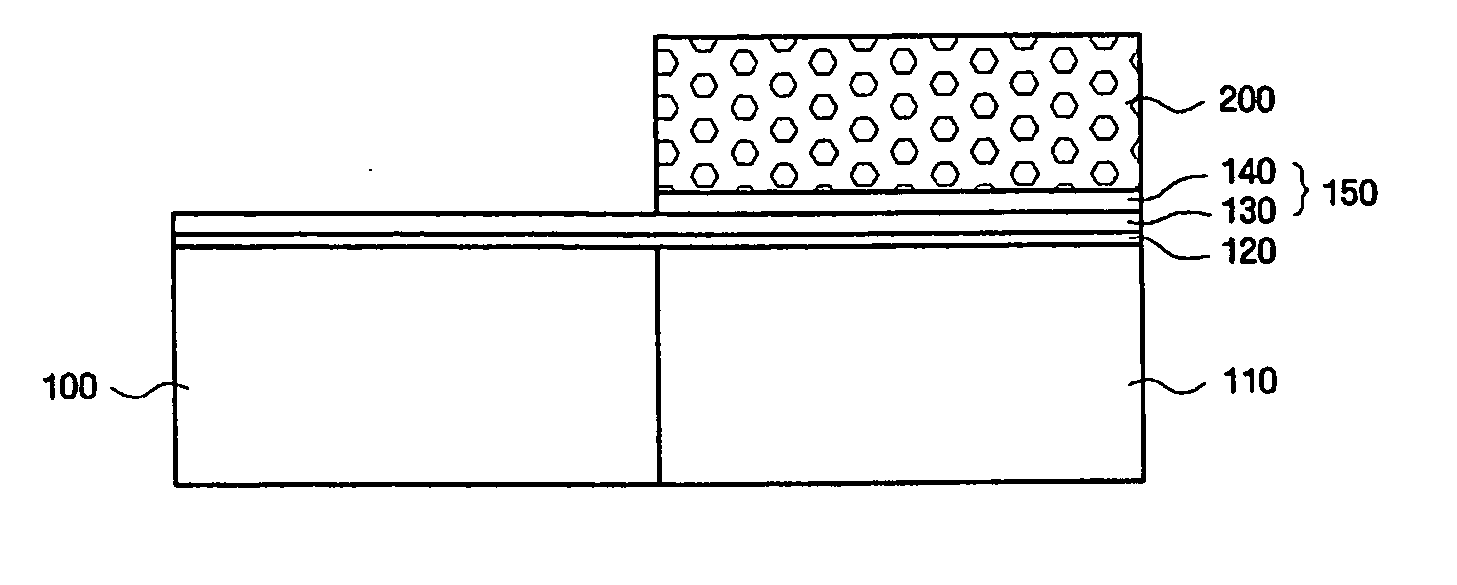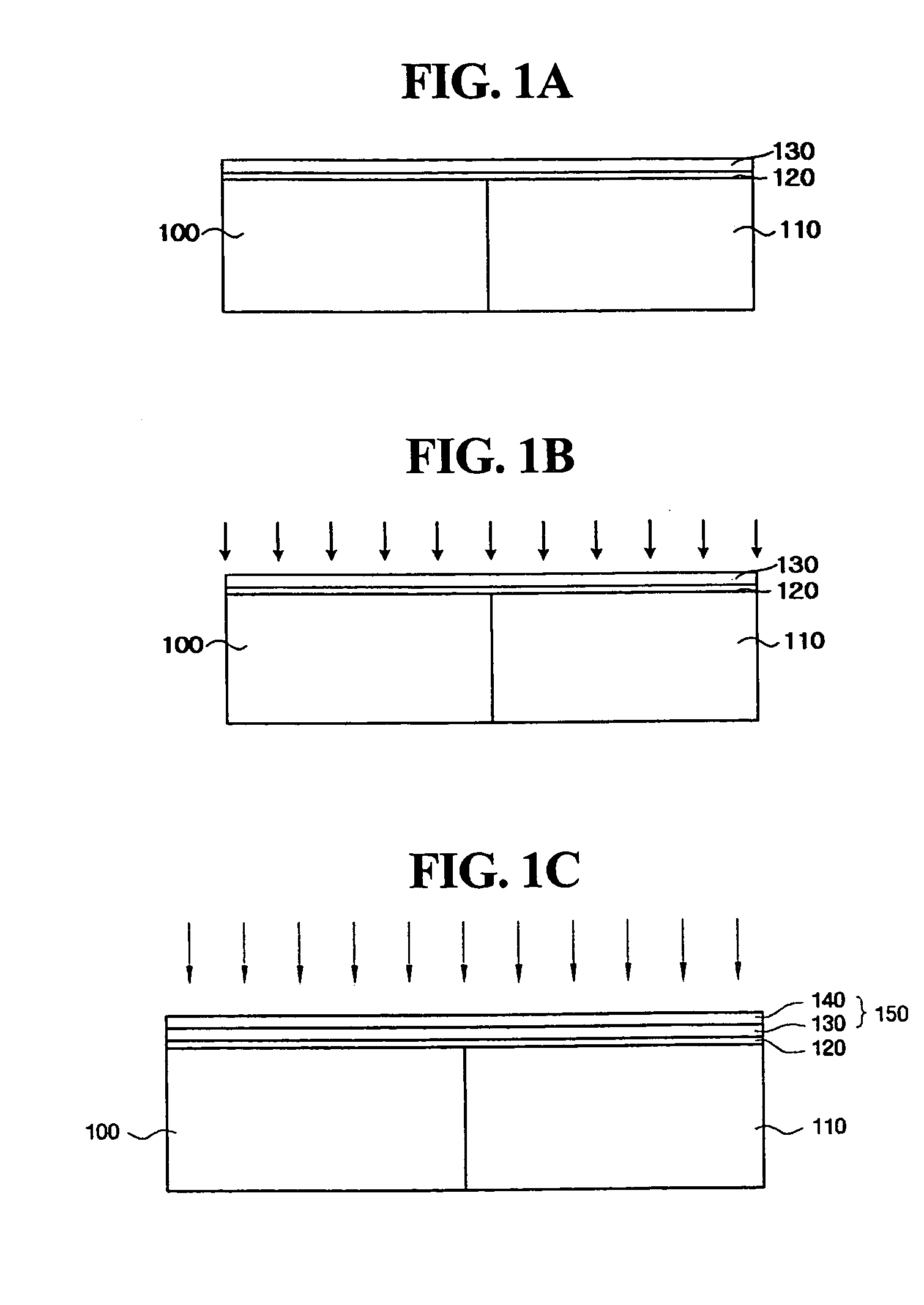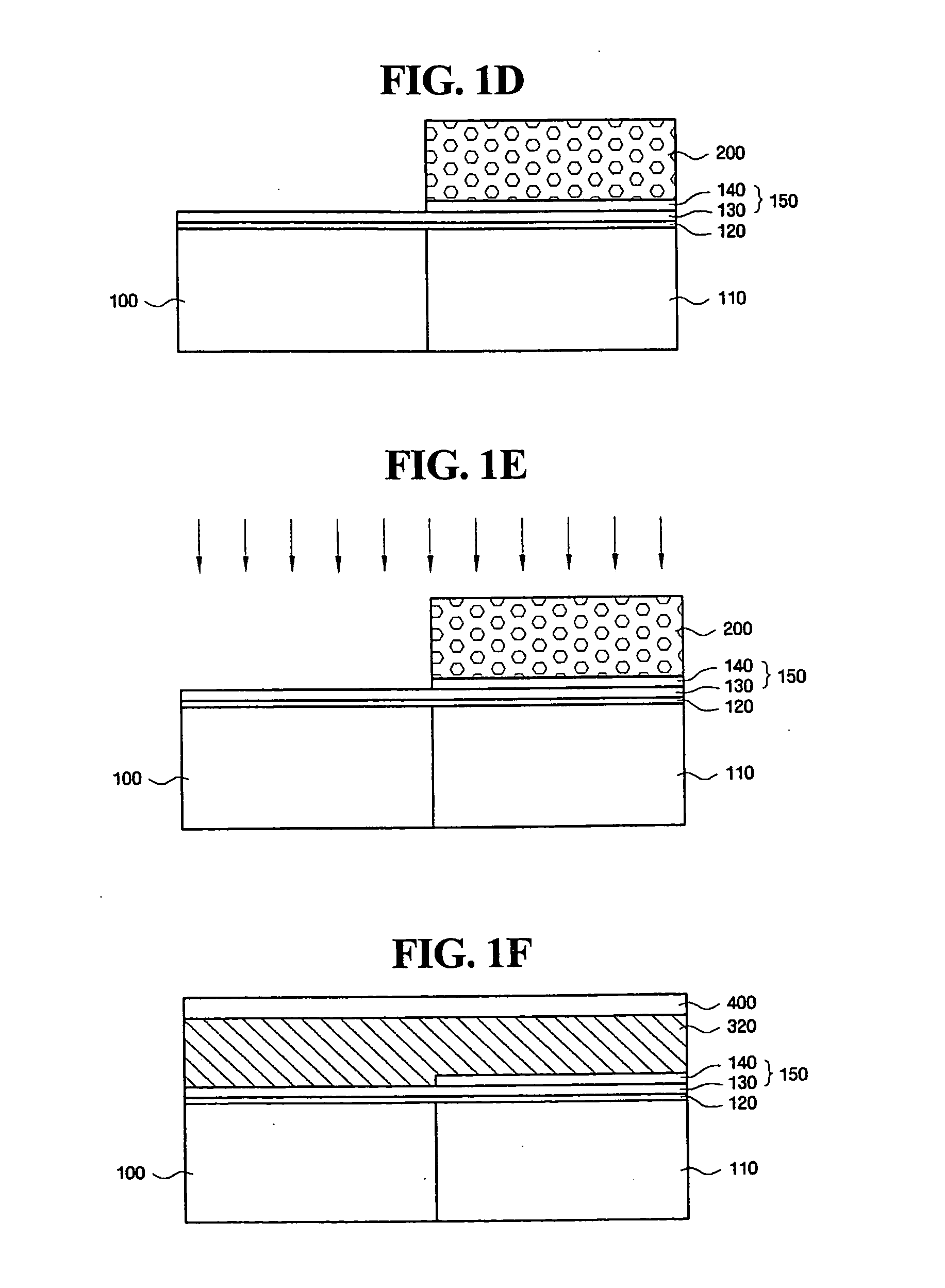Method of fabricating gate of semiconductor device using oxygen-free ashing process
- Summary
- Abstract
- Description
- Claims
- Application Information
AI Technical Summary
Benefits of technology
Problems solved by technology
Method used
Image
Examples
first embodiment
[0020]FIGS. 1A to 1G are sectional views of a semiconductor device showing the process of fabricating a semiconductor device using an oxygen-free ashing process, according to the present invention.
[0021]As shown in FIG. 1A, an NMOS region 100 and a PMOS region 110 are formed on a substrate, and an interfacial layer 120 is formed before forming a lower gate dielectric film 130. The interfacial layer 120, serving to prevent a reaction between the lower gate dielectric film 130 and the silicon substrate, may be formed to a thickness of 1.5 nm or less through a cleaning process using, for example, ozone (O3) gas or ozone-containing ozone water, or alternatively may be omitted. After the formation of the interfacial layer 120, the lower gate dielectric film130 is formed. In addition, a silicon oxide film (not shown) may be provided between the interfacial layer 120 and the lower gate dielectric film 130. In the case where a gate dielectric film has a stacked structure, the lower gate die...
second embodiment
[0029]FIGS. 2A to 2E are sectional views showing the process of fabricating a semiconductor device using an oxygen-free ashing process, according to the present invention.
[0030]As shown in FIG. 2A, an NMOS region 100 and a PMOS region 110 are formed, and an interfacial layer 120 and a gate dielectric film 150 are formed, as described above. In addition, a silicon oxide film (not shown) may be provided between the interfacial layer 120 and the gate dielectric film 150, and, alternatively, the interfacial layer 120 may be omitted. The gate dielectric film 150 may be provided in the form of a single-layer structure or a stacked structure, and also may be formed with a high-k dielectric film. When using the high-k dielectric film, the examples of the high-k dielectric film described above may be applied. Thereafter, although not shown in the drawing, PDA-1 may be conducted.
[0031]As shown in FIG. 2B, a conductive film 300 is formed to a thickness of 200 Å or less on the gate dielectric f...
third embodiment
[0036]FIGS. 3A to 3D are sectional views of a semiconductor device showing the process of fabricating a semiconductor device using an oxygen-free ashing process, according to the present invention.
[0037]As shown in FIG. 3A, an NMOS region 100 and a PMOS region 110 are formed, and an interfacial layer 120 and a gate dielectric film 150 are formed, through processes the same as those of the fabrication method according to the embodiments mentioned above. On the gate dielectric film 150, a multilayer conductive film 300 having a stacked structure of a first conductive film 310 and a second conductive film 315 is formed. The first conductive film 310 is 200 Å thick or less, and the second conductive film 315 is formed of material different from that of the first conductive film 310 and functions to modulate the work function of the first conductive film 310. The first conductive film 310 and the second conductive film 315 may be formed of any conductor selected from among a metal film, ...
PUM
 Login to View More
Login to View More Abstract
Description
Claims
Application Information
 Login to View More
Login to View More - R&D
- Intellectual Property
- Life Sciences
- Materials
- Tech Scout
- Unparalleled Data Quality
- Higher Quality Content
- 60% Fewer Hallucinations
Browse by: Latest US Patents, China's latest patents, Technical Efficacy Thesaurus, Application Domain, Technology Topic, Popular Technical Reports.
© 2025 PatSnap. All rights reserved.Legal|Privacy policy|Modern Slavery Act Transparency Statement|Sitemap|About US| Contact US: help@patsnap.com



